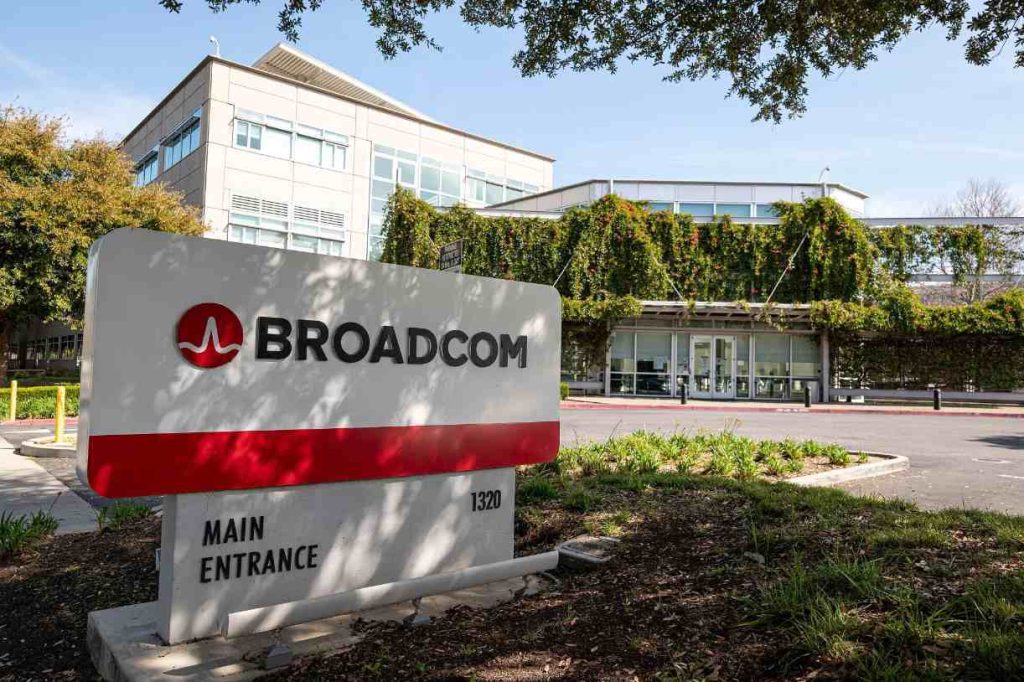OpenAI’s Bold Move Towards Custom AI Chips

In a world where artificial intelligence advances at breakneck speed, the need for high-performance chips is more critical than ever. OpenAI, a leader in the AI industry, heavily depends on Nvidia’s semiconductors to power its sophisticated AI models. However, the increasing demand for these chips has led to significant delays, with wait times stretching up to 11 months.
This situation has forced OpenAI to consider taking matters into its own hands. They are exploring the possibility of developing their proprietary AI chips, aiming to maintain their competitive edge and ensure the seamless progression of their AI technologies. With talks underway with several chip manufacturers, including Broadcom, OpenAI’s initiative could reshape the AI landscape.
OpenAI’s Chip Dilemma
The demand for high-performance chips has skyrocketed in the fast-paced world of artificial intelligence. Like many tech giants, OpenAI relies heavily on Nvidia’s semiconductors to train and run its advanced AI models. However, with the growing demand, getting these chips is becoming increasingly difficult. Recent reports indicate a wait time of up to 11 months for Nvidia GPUs.
This significant delay has prompted OpenAI to consider building its chips to maintain its edge in the AI field. OpenAI is contemplating a groundbreaking shift to develop its proprietary AI chips. They are in talks with several manufacturers, including Broadcom, to bring this vision to life. This move is seen as essential to avoid future bottlenecks and ensure the continuous development and deployment of cutting-edge AI models.
Learning from Industry Leaders
OpenAI is not the first to brave this pioneering path in developing custom AI chips. Alphabet set a precedent by creating its tensor processing units (TPUs) to power its AI projects. Now, OpenAI appears to be following in Alphabet’s footsteps by hiring several ex-Alphabet employees who worked on the TPU project. By leveraging this expertise, OpenAI aims to advance its chip development initiatives more swiftly.
Nevertheless, developing proprietary chips is no small feat. The process involves substantial investment, meticulous planning, and a deep understanding of semiconductor technology. OpenAI would need to overcome significant challenges, including catching up with Nvidia, which is considered to be five to ten years ahead of the competition.
The Broader Impact on the AI Ecosystem
The potential benefits of OpenAI’s shift towards developing its chips extend beyond its operations. If successful, it could significantly alter the AI ecosystem by reducing the industry’s reliance on Nvidia and possibly lowering the cost of AI development over time. This move could democratize access to high-performance AI chips, fostering innovation and growth across various sectors.
The decision underscores a broader trend within the tech industry: the drive toward self-reliance and technological sovereignty. Other companies may follow suit, leading to a more diversified and resilient supply chain for critical AI infrastructure. However, it will take years before seeing the tangible benefits of such ambitious endeavors.
Challenges and Uncertainties
Despite its ambitious plans, OpenAI faces numerous obstacles. One of the primary hurdles is the significant lead that Nvidia holds in the AI chip market. Nvidia’s early bet on AI has paid off, positioning it as a dominant player with substantial technological advantages. According to tech journalist Stephen Witt, Nvidia is five to ten years ahead of its competitors.
Moreover, developing proprietary chips from scratch requires massive investments and a robust talent pool. OpenAI’s recent efforts to raise $7 trillion for a semiconductor fund highlight the magnitude of resources needed. The pathway to creating production-ready chips is fraught with technical and financial challenges, making it a high-stakes endeavor.
Expert Insights and Opinions
Insights from industry insiders shed light on the strategic importance of OpenAI’s initiative. One expert told the Financial Times, “The limiting factor of AI is capacity: chip capacity, energy capacity, compute capacity. [OpenAI] is not just going to sit back and let others build [that] when they are on the front line.” This perspective emphasizes the critical need for OpenAI to secure and expand its AI capabilities.
In the fiercely competitive AI landscape, having proprietary chips could provide a significant edge. Experts believe that while the immediate road may be challenging, the long-term benefits could be substantial. By taking control of their chip supply, OpenAI positions itself to lead in innovation and performance, potentially setting new benchmarks in AI technology.
The Future of AI Chip Development
Looking ahead, the development of proprietary AI chips by OpenAI could mark a transformative era in artificial intelligence. By investing in its hardware capabilities, OpenAI demonstrates its commitment to pushing the boundaries of what’s possible in AI. This initiative could inspire other tech companies to explore similar paths, fostering a more vibrant and competitive marketplace.
OpenAI’s initiative reflects a broader industry trend toward vertical integration. Companies seek greater control over their technological stack to enhance efficiency and performance. As this trend continues, it may lead to significant advancements in AI hardware and software, driving the next wave of innovation in the tech industry.
In conclusion, the journey towards developing proprietary AI chips is laden with challenges but holds immense potential. OpenAI’s bold steps could redefine the landscape of AI technology, paving the way for a more self-sustaining and innovative future. Organizations that can navigate this complex terrain will likely emerge as leaders in the rapidly evolving world of artificial intelligence.
In conclusion, OpenAI’s bold initiative to develop proprietary AI chips signifies a strategic shift towards ensuring long-term success in the rapidly evolving field of artificial intelligence. Their move could alter the landscape not only for their operations but for the entire AI industry. The challenges are immense, yet so are the potential rewards. OpenAI’s dedicated efforts and substantial investments could pave the way for accelerated innovation and a more resilient AI ecosystem.
By taking control of their technological destiny, OpenAI aims to overcome supply chain issues and potential bottlenecks. This ambitious project may serve as a valuable case study for other tech companies considering similar paths towards self-reliance. The journey will undoubtedly be fraught with obstacles, but the ultimate payoff could set new standards in AI technology and performance.





